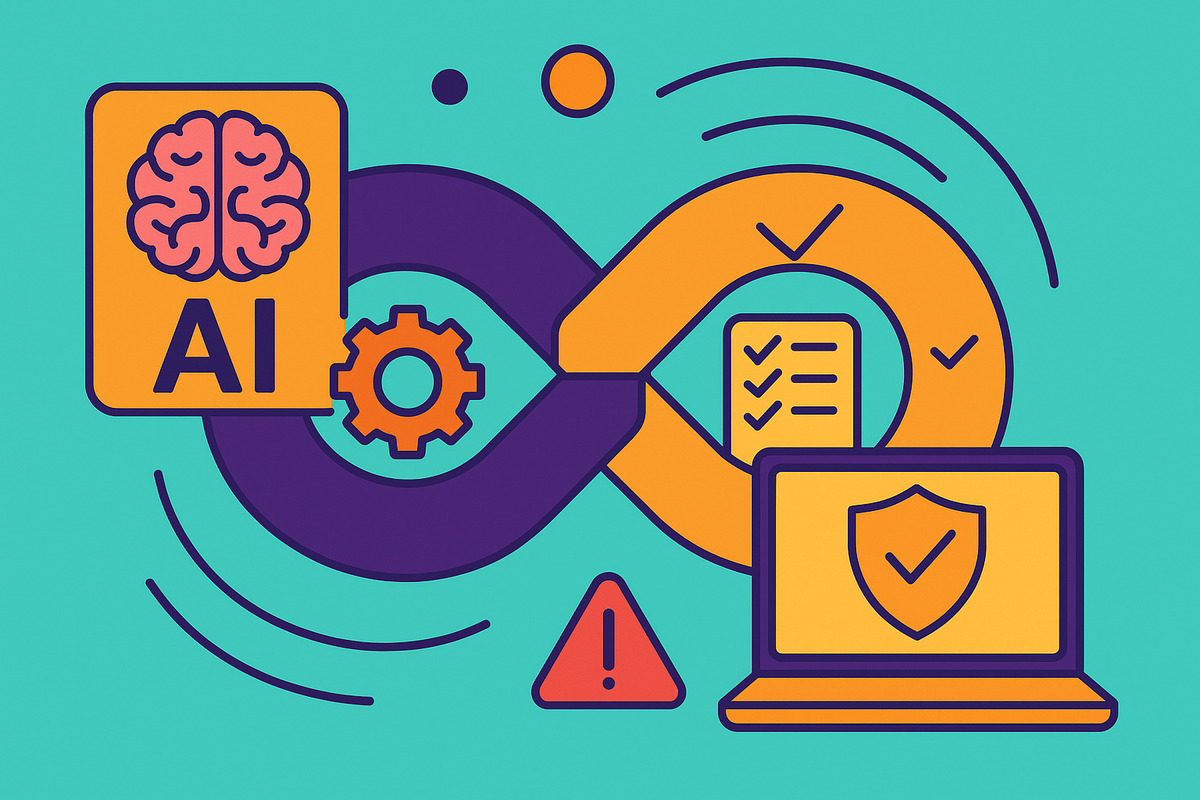AI Governance is the New DevOps

We’ve seen this pattern before. DevOps reshaped how engineering teams work not through new tools alone, but by embedding responsibility into the process. Deployments became trackable, failures were surfaced early, and teams were expected to own what they shipped. This change wasn’t driven by compliance, it came from the need to make systems work under real conditions in the new scaled up world.
AI now sits in a similar position.
From the conversations I had at LegalTechTalks, AI governance still happens at a distance. There are policies, ethical principles, maybe a steering group. Meanwhile, the models are integrated into tools, influencing decisions, generating content, and surfacing insight with minimal oversight.
When things go wrong, people are left scrambling to piece together what happened. In too many cases, no one owns the outcome and no one can explain the behaviour.
Governance that Lives in the Workflow
Effective governance doesn’t rely on after-the-fact reviews. It’s embedded into how things run.
If a model is producing work that impacts clients, operations, or reputation, then you need more than guidelines. You need version control for prompts, you need structured logs that link inputs to outputs and you need visibility into how the model behaves over time, especially when context changes.
This is where DevOps has already done the hard work. Software teams adopted CI/CD pipelines not only to move faster, but to make everything traceable. Every code change was logged. Every production failure could be linked to a specific commit. Innovation didn’t slow down and it became safer to scale.
Not everyone embraced it from day one, some teams were dragged kicking and screaming into new ways of working because it felt like overhead. Writing tests, setting up build pipelines, dealing with breakages it all just looked like extra work. Over time, though, those same teams realised how much time was saved. Automated testing, shared logs, and build monitoring reduced friction and gave teams the confidence to move faster with fewer surprises.
That’s the level AI needs to reach.
When You’re Not Building In-House
More firms are integrating vendor platforms rather than developing their own systems. That’s often an easier call, especially in legal where engineering resource can be limited and expertise missing.
Still, outsourcing the tooling doesn’t remove your responsibility for the output. If a vendor platform suggests an incorrect edit, misinterprets a contract term, or redacts sensitive content inappropriately, the accountability doesn’t go to the vendor. It lands on your team.
The governance expectations stay the same.
If you're using vendor platforms, you should be asking:
- Can outputs be traced back to specific prompts and model versions?
- Are logs captured that show how responses were generated?
- What processes are in place to monitor for drift or behavioural shifts?
- Are there mechanisms to define thresholds or rules for human intervention?
- How quickly can we investigate an issue?
- Can risk or compliance teams inspect and validate what the model is doing?
You don’t need access to the model’s internals to answer those. What matters is whether the tool gives you levers, visibility, and control. If a vendor can’t support that, you’re not buying a product, you’re adopting a brand new blind spot.
There’s nothing wrong with using vendor tooling, but you still need internal clarity on who’s accountable for performance, oversight, and escalation. Governance can’t be entirely outsourced, someone inside your organisation still needs to own the system behaviour, even if the system itself lives elsewhere.
In-house teams should be defining the rules, monitoring behaviour, and reviewing the logs. Vendors can handle model tuning or UX, but traceability, risk thresholds, and review points? Those are yours to own.
Governance Done Properly Speeds You Up
There’s a view that governance gets in the way, that it slows down innovation or adds friction to every release.
That hasn’t been true for DevOps, and it doesn’t need to be true for AI.
When governance is part of the system, you don’t need long discussions about whether something’s safe to deploy. You can see it because you can check the logs, track changes, or flag an issue based on actual behaviour rather than gut feel. That saves time, it avoids rework and gives teams/leadership confidence that they’re building on something solid.
It also makes adoption easier across the organisation. People trust systems more when it’s clear someone is responsible, and when issues are surfaced quickly. No one wants to rely on AI in high-pressure settings without knowing who to go to if something doesn’t look right.
AI is already in production across legal, It’s shaping decisions, rewording outputs, driving efficiencies. The question isn’t whether it’s ready, it's whether the systems around it are.
If it’s part of your operations, it needs to be treated as such.
That means:
- Traceability.
- Ownership.
- Runtime observability.
- Feedback loops that work.
You don’t need a separate governance team to make this work. You need infrastructure that supports responsible use, and people who treat oversight as part of the build.
If you’re using vendor tools, the same expectations apply. Ask the questions you’d ask your own engineers. If you wouldn’t ship it blind, don’t use it blind either.